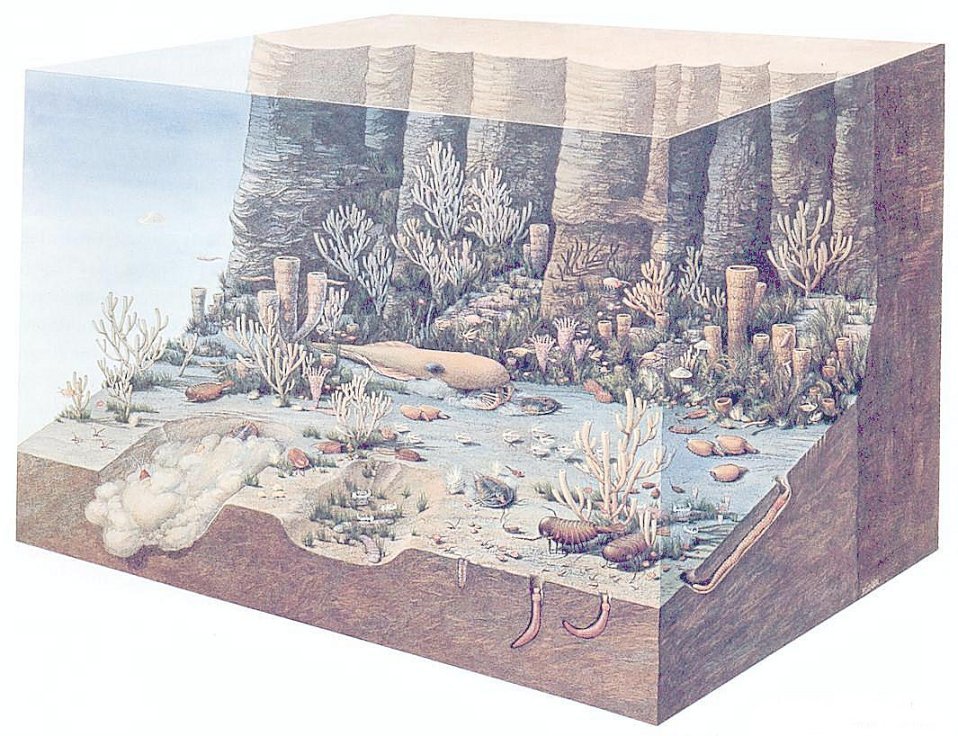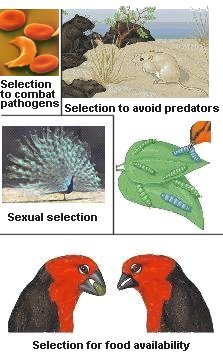 |
problematical forms that cannot definitely be assigned to well established taxa. They include virtually all the groups known from the Burgess Shale and other Middle Cambrian localities, thus compressing the available time for the morphological diversification of metazoans, known as the Cambrian Explosion, to just 10 Million years or so. These extraordinary fossil deposits, where organisms are so well preserved that even their soft parts remain as carbon films, are referred to as Lagerstätten, a German word that means "resting places", only recently borrowed by geologists. A lagerstatte is a spectacular rarity, and a few dozen of them are scattered through the Earth's geologic record like gems. |





